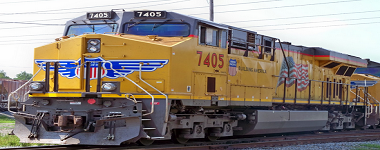Week 41 of 2017 shows same week total rail traffic (from same week one year ago) improved according to the Association of American Railroads (AAR) traffic data. The economically intuitive sectors remain in expansion,

Analyst Opinion of the Rail Data
We review this data set to understand the economy. If coal and grain are removed from the analysis, this week it improved 4.7 % (meaning that the predictive economic elements improved year-over-year). This week the one year rolling averages continue in expansion for the 20th week after contraction beginning in late 2015.
The strength this week continues to be intermodal – which is economically positive (and is contrary to the slowness of the economically intuitive carload counts).
The following graph compares the four week moving averages for the rail economically intuitive sectors (red line) vs. total movements (blue line): Rail’s intuitive sectors have been bouncing around the zero growth line for most of 2017.
This analysis is looking for clues in the rail data to show the direction of economic activity – and is not necessarily looking for clues of profitability of the railroads. The weekly data is fairly noisy, and the best way to view it is to look at the rolling averages (carloads [including coal and grain] and intermodal combined).
A summary of the data from the AAR:
For this week, total U.S. weekly rail traffic was 548,264 carloads and intermodal units, up 3.1 percent compared with the same week last year.
Total carloads for the week ending October 14 were 264,161 carloads, up 0.5 percent compared with the same week in 2016, while U.S. weekly intermodal volume was 284,103 containers and trailers, up 5.5 percent compared to 2016.
Four of the 10 carload commodity groups posted an increase compared with the same week in 2016. They included nonmetallic minerals, up 4,974 carloads, to 40,007; metallic ores and metals, up 3,454 carloads, to 22,306; and chemicals, up 1,805 carloads, to 30,961. Commodity groups that posted decreases compared with the same week in 2016 included grain, down 5,369 carloads, to 21,930; petroleum and petroleum products, down 1,533 carloads, to 8,959; and coal, down 1,419 carloads, to 86,292.
For the first 41 weeks of 2017, U.S. railroads reported cumulative volume of 10,640,157 carloads, up 3.7 percent from the same point last year; and 11,002,145 intermodal units, up 3.7 percent from last year. Total combined U.S. traffic for the first 41 weeks of 2017 was 21,642,302 carloads and intermodal units, an increase of 3.7 percent compared to last year.










Leave A Comment